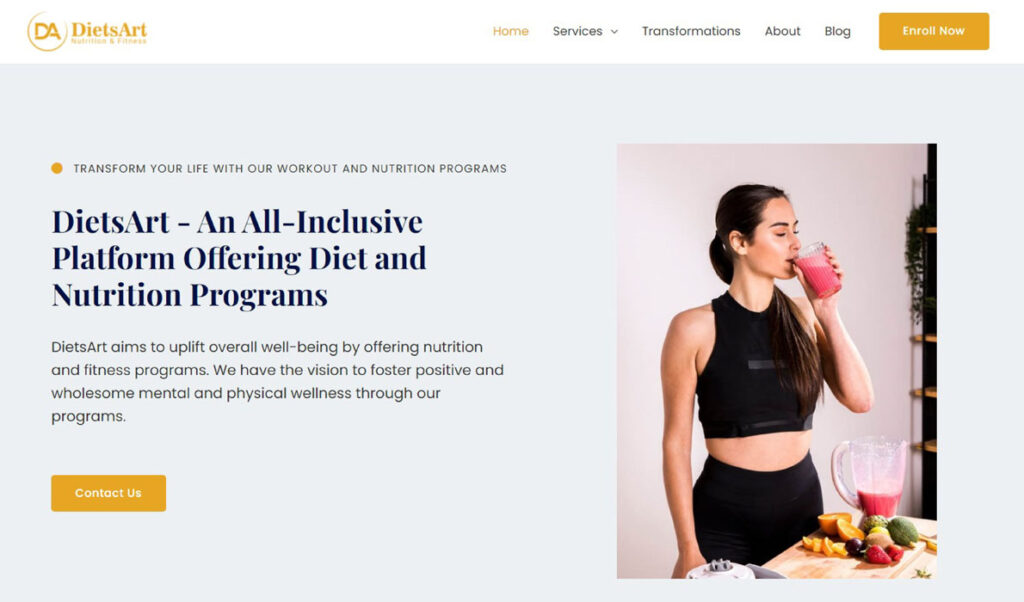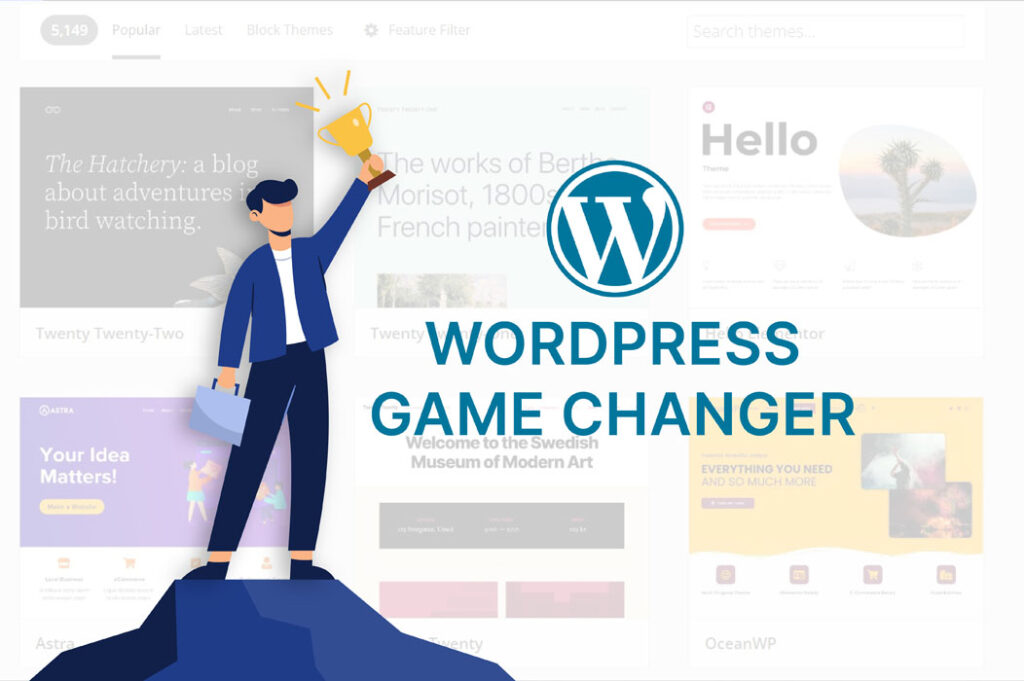Technical considerations, including wireframes, programming, and content marketing, tend to dominate web designers’ thoughts when they consider the website developing & developing approach. Great design, however, is not about the aesthetics or ease with which one may share content on social media. To get a great design, one must choose a website developing procedure that is consistent with the overall goal.
Websites with a good design have benefits beyond just visual appeal. They use a wide range of cues, including graphics, text, and conversations, to entice site visitors and educate them about the products, business, and branding. This implies that you require to have a clear purpose in mind for your website as a whole.
But how can you get to that point of perfect balance? Using an approach to website developing that is both aesthetic and practical.
The significance of website layout for your target market:
You must get the style of your webpage just right since it’s a major part of your label’s online visibility. Bottom-of-the-funnel plugs may also be nurtured and converted on your webpage. For this reason, you can’t afford any webpage errors that could drive visitors to leave in disgust.
All your company stands for may be seen on your webpage. Your webpage’s colors, fonts, graphics, etc., all work together to create a unique and memorable brand. Whether you’re going for a serious, businesslike vibe or something more playful and modern, your choice of font will help set the tone for your brand name.
Principle: make the layout uncluttered and focused on the most crucial information.
The website developing with your target demographic in mind can help guarantee a smooth and successful launch of your website. If your webpage is well-designed, your visitors will have an easier time navigating it.
Your site’s visitors want to be able to swiftly and easily locate the specific pieces of content they seek. The layout of your webpage should facilitate this procedure and prevent lost customers. A well-designed website has several additional advantages for your company and your target market.
Developing a website just takes only 8 easy steps:
- Identification of Objectives:
In this first phase, the designer will work closely with the customer or other partners to determine the ultimate purpose of the website. During this phase of website developing and production, it is important to consider and respond to questions like:
- The site’s target audience.
- The question is, “Why?” since it’s unclear what their goals are.
- Is the major purpose of this website education, business (anyone familiar with e-commerce?), or entertainment?
- If the webpage is part of a larger branding plan, does it need to echo the overall approach, or may it have its voice?
- Identify any similar sites and explain how they influenced the design of this one, if applicable.
It is the most crucial stage of developing a website. These issues need to be addressed explicitly in the brief, otherwise, the project may go on the incorrect path.
Writing down one or more specific objectives, or even just a brief overview of what should be accomplished might be helpful. If this is done, the design will be set in the appropriate direction. Get familiar with the competitors and the demographics of the web’s visitors to succeed.
- Define the scope of your project:
Scope creep is a major source of frustration and delay in website design initiatives. Initially, the customer requests assistance with designing and website developing a webpage; but, as the project progresses, other tasks are added, or the original aim is replaced with a new one.
However, this is not always a bad thing, since it typically means more tasks for designers. However, the project might quickly become completely impractical if the higher demands aren’t accompanied by a rise in the funding or timetable.
- Site planning and wireframing:
Building a functional website starts with a sitemap. It aids in giving web designers an understanding of the web’s data architecture and clarifies the connections between the different sections of the page and their respective content.
It’s like trying to construct a home without a set of plans. That rarely ends nicely.
After gathering ideas for the website developing, a prototype of the wireframe should be created. Wireframes are useful for preserving information about the site’s graphic design & content features and for spotting problems and significant gaps inside the sitemap.
The wireframe is an early stage in the design process that serves as a guideline for the completed website. Additionally, it may serve as a model for how other components should be laid together.
- Origination of material:
There are two primary functions of content. In the first place, content is what pulls in visitors and motivates them to execute the desired activities. Both the actual content (the text) and the presentation (the typeface and structural aspects) have an impact.
Poorly written content that lacks personality and is excessive in length is unlikely to hold readers’ interest. Content that is concise, interesting, and engaging is more likely to capture their attention and encourage them to explore further.
- SEO:
To further increase a site’s exposure in SERPs, content is essential. Search engine optimization, or SEO, produces and enhances content to get high search engine rankings.
It’s crucial to a webpage’s success that its keywords and key terms be chosen carefully. My go-to tool is always Google’s Keyword Analyzer. Using this instrument, you can zero in on what real people are looking for on the website by seeing the search traffic of possible target terms and phrases. Keeping up with the increasingly sophisticated algorithms used by search engines requires a corresponding increase in sophistication on the part of your content initiatives. Using Google Terms is also helpful for discovering users’ search keywords.
A web’s discoverability is enhanced by content that is both well-written and useful, and also loaded with relevant keywords.
The majority of the material will be created by the customer; nevertheless, you must provide them with direction on what words and terms they should use.
- Contents of a visual nature:
The next step is to develop the site’s aesthetic. Existing branding components, color options, and trademarks, as specified by the client, will frequently affect this stage of the website developing procedure. However, this is also the point at which a talented web designer can show off their skills.
The use of images is becoming more important in website development. High-quality photographs not only make a website seem more reliable but also convey a message, work well on mobile devices, and inspire confidence in the viewer.
More clicks, readers, and money may be made with the help of good visual content. Users would like to see pictures on a webpage even more than text. Images not only break up the monotony of a wall of text and end up making the page better to handle, but may also provide crucial information to the viewer without them having to read a word.
- Testing:
When the site’s graphics and content are complete, testing may begin.
Check each page carefully to ensure that all of the links are active and that the site displays correctly across all browsers and devices. Although it may be a hassle to track down and remedy errors that arise from minor code mistakes, it’s preferable to do so before releasing a site that doesn’t function as intended to the audience.
- Launch:
Once all the testing is done and you’re satisfied with the site, it’s time to introduce, the exciting moment that everyone looks forward to throughout webpage development.
Attempt this at your own risk. There may be still some details that require adjusting. Website development is an ever-evolving process that needs regular upkeep.
Finding that sweet spot between aesthetics and practicality is the name of the game in website development, indeed design in particular. All of the typography, color scheme, and design themes must be appropriate. However, the manner visitors use your site is as crucial.
Designers with experience should be familiar with this idea and be capable of creating a website that successfully balances the two.
It is essential to keep in mind that the launching phase is by no means the last step of the project. The internet’s infinite potential is its greatest strength. Even after launching the website, it’s possible to do ongoing user testing of new features and functionality, track metrics, and fine-tune the message.
Summary:
If your webpage is successful, how would you know? You, the product developer, must determine your criteria for success. Because of this, it’s crucial to keep the end goal in sight at all times.
Even though most factors that contribute to a successful webpage have to do with the customer experience plus your brand, it is crucial to learn how to utilize technology, analytics, and reviews to continuously improve your website.
Not a lot of attention is usually paid to website developing, yet it’s crucial. Making a solid first impression with potential clients requires a well-designed webpage. It may also aid in lead nurturing and the final sale.
What’s more, it improves the overall quality of your website’s customer experience and makes it easier for visitors to open and browse. Visitors are more likely to interact with your material and perform the appropriate action if your webpage is easy to use. The website developing with the end user in mind will increase the likelihood of a sale being made.
You should carefully investigate prospective designers to be sure they can produce an accessible and user-friendly webpage. You may always assess your existing site and make changes to enhance usability and ease of access.


